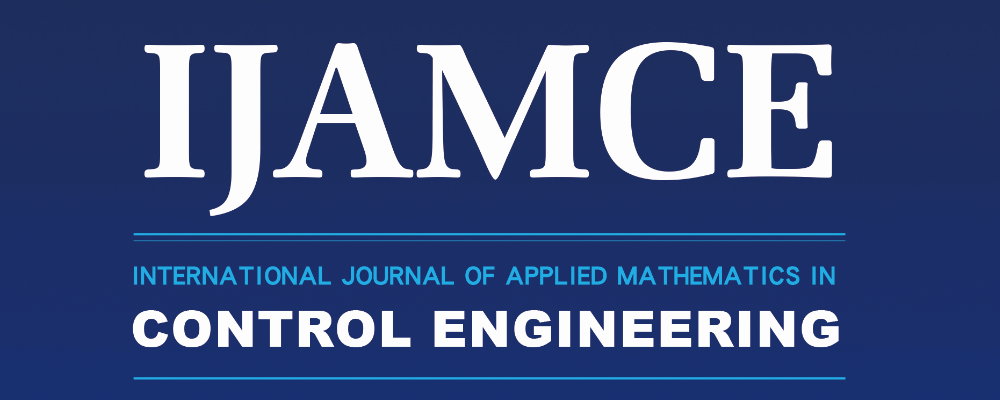
| Home | News | Papers | Editors | Submissions | Conference |
IJAMCE is a comprehensive journal devoted to the development of the theory and application of mathematics in control engineering. The primary aim of this journal is rapid publication and dissemination of importan mathematical work which has relevance to engineering. All areas of mathematical theory in control engineering are within the scope of the journal. In particular, U-model control, adaptive control, neural networks control and sliding mode control are of interest. Mathematical work of interest includes, but is not limited to, ordinary and partial differential equations, stochastic processes, calculus of variations, and nonlinear analysis. All the research results published in this journal are expected to be rapidly popularized and applied in practice, which will provide a more valuable reference for control engineering.
Founded in 1952, Qingdao University of Technology (QUT) has begun as a Civil Engineering School and has come a long way since then. Being a flagman university we pushed the boundaries of knowledge, transformed the academic experience and nowadays we are a comprehensive university mainly focusing on Engineering, coordinately covering other spheres as Science, Economics, Management, Literature, Law and Art. QUT's main major pillars are Civil Engineering Architecture, Mechanical Engineering and Environmental Engineering. Due to hard work, innovative researches and cutting-edge solutions QUT has become one of the universities financed by Project 111 - the plan initiated by the Ministry of Education of PRC to establish innovation centers for the purposes of technology transfer. Our community has gained tremendous strength as a magnet for talents from around the world.
The university consists of three campuses within Qingdao City (Huangdao Campus, Shibei Campus) and Linyi City (Linyi Campus), and covers a vast area of 2,171,500 sq.m. As a brief chronological history of university - founded in 1952 and renamed to Qingdao University of Technology in 2004, we obtained the right to enroll postgraduates in 1993 and doctoral students in 2005.
From science and engineering to the arts, architecture, humanities, social sciences and management, the university combines 12 academic schools: School of Civil Engineering, School of Architecture and Urban Planning, School of Mechanical and Automotive Engineering, School of Environmental and Municipal Engineering, School of Information and Control Engineering , School of Science, School of Management Engineering , Business School, School of Humanities and Foreign languages, School of Arts, etc. Our undergraduates work shoulder to shoulder with faculties and transfer the ideas into action, QUT is fully capable to cultivate nation's best talents whether it is bachelor's, master's or doctoral degree and to make appropriate contributions to the nation and the world. QUT has 2 postdoctoral research hubs, 2 disciplines to confer doctoral degrees, 21 disciplines to confer master's degrees and 59 undergraduate programs. At the present, our campus is a workshop for 34,000 full-time students.

|

|

|
by Ye Rong,Qingyi Kong,Wenda Qi,Chao Li,Huan Wu
ABSTRACT: In this paper,the experimental study is carried out on two kinds of switched reluctance motor with the same powerof the four phase 8/6 pole and four phase 16/12 pole with the same rated parameters.Electromagnetic simulation analysis of self-inductance,mutual inductance,torque and pulsation effect and winding current of two different SRM windings is carried out.The results show that compared with 16/12 pole,8/6 pole switched reluctance motor has large self-inductance value, large mutual inductance value,large torque,small torque ripple,small current and good performance.This research has important guiding significance for the design of SRM motor body.
by Xingguo Song,Tingting Liu
ABSTRACT: Wheeled Mobile Robots (WMRs)provide the advantage of stable locomotion on uneven terrain;hence,such mechanisms are used for locomotion by outdoor robots including those used for search and rescue.However,slippage often occurs when WMRs follows a slope in uneven terrain,and the slippage generates large accumulated positioning errors in the vehicle,compared with conventional wheeled mobile robots.An estimation of the wheel slip ratio is essential to improve the accuracy of locomotion control.In this paper,we propose an improved slip-compensation and adaptive NN control method to allow WMR to follow a slope curve,where stability is guaranteed by Lyapunov theory.All system states use neural network online weight tuning algorithms,which guarantee small tracking errors and no loss of stability in robot motion with bounded input signals.We demonstrate superior tracking results using the proposed control method in various Matlab simulations.
by Linwei Li,Xianglong Liu
ABSTRACT: In this paper,a multi-innovation least-squares scheme is proposed for Wiener system on the basis of the decomposition technique.Firstly,the linear model is substituted into the special term of nonlinear model by using decomposition technique,an estimation model of parameter separation of linear and nonlinear model is established,which reduces the computation burden of algorithm.Secondly,a reference model is developed to handle the internal signal,which transforms the unknown internal signal into the indirectly measurable signal,which enhances the performance of identification method.Finally,the scalar innovation is revised to multi-innovation through the usage of certain length,which improves the accuracy of estimation scheme.Furthermore,the influences of different noise and different innovation length on the proposed algorithm are analyzed.The simulation results show that the proposed estimation approach outperforms the recursive least squares method in estimation accuracy and convergence rate.